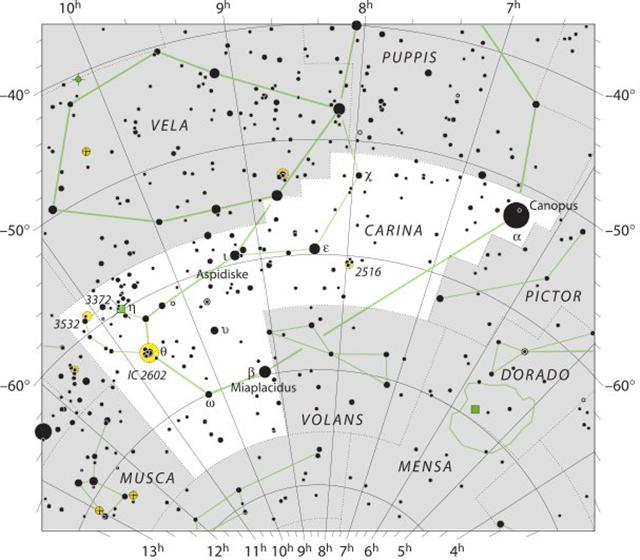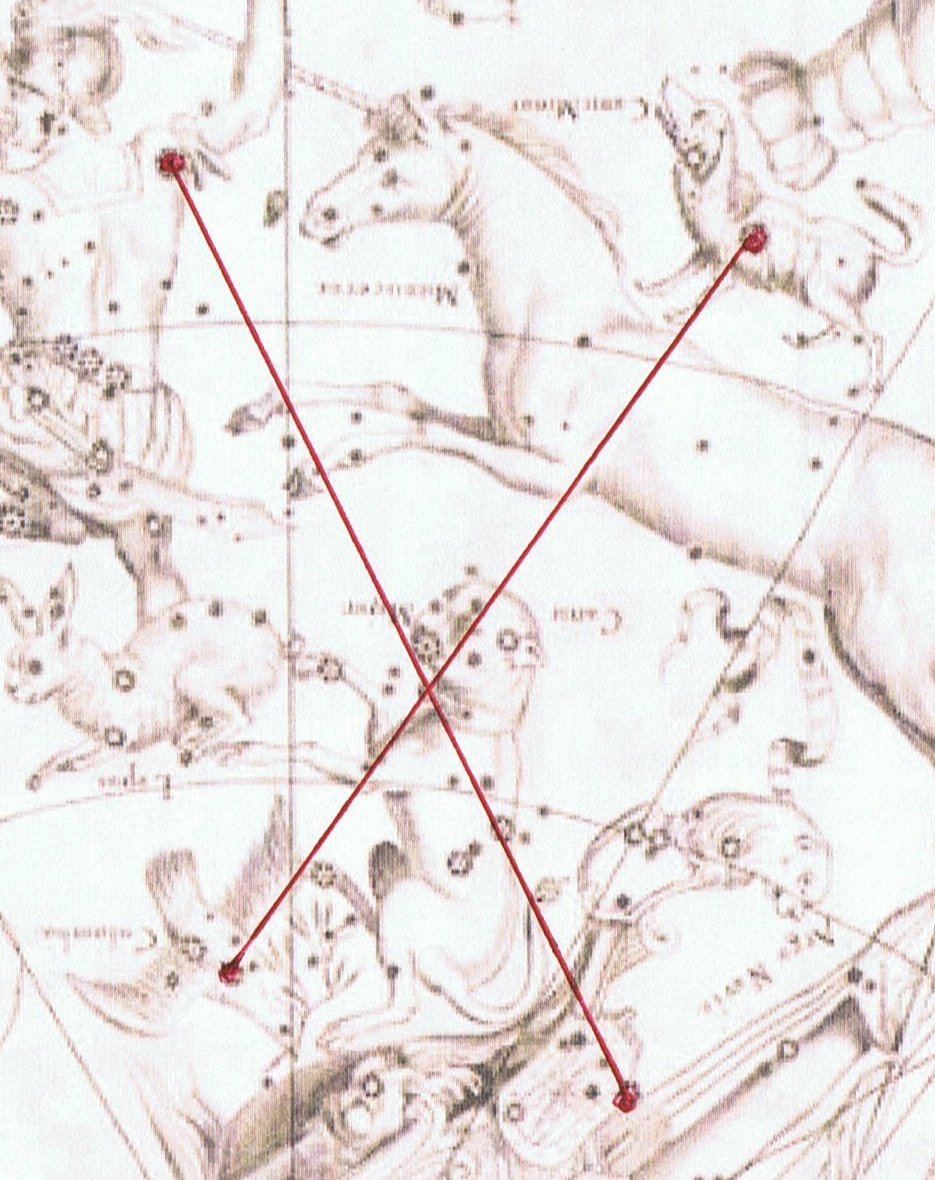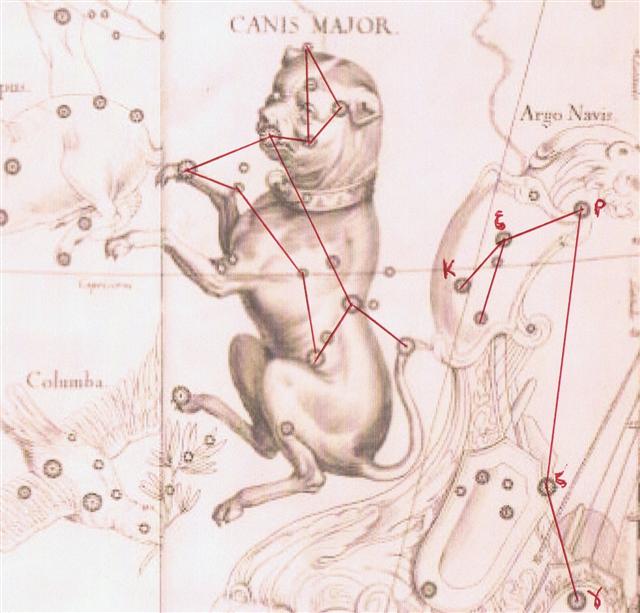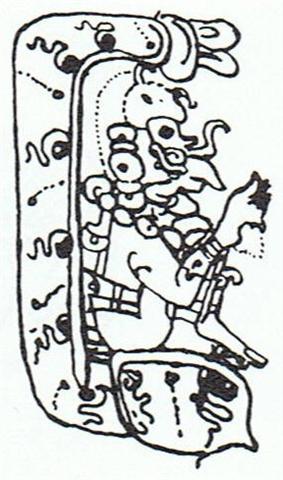In my star list Tureis (ι, - and I may earlier have used the wrong letter ε) is the last star in Carina. But there are, we can see, a few more (with Greek letters) rising later. I ought to add them to my list: 
In Wikipedia I also found the name Drus for χ Carinae, but with no explanation. I will adopt the name, but we should not forget the Greek letter: ... In Plato's Timaeus, it is explained that the two bands that form the soul of the world cross each other like the letter Χ ... However, we have not yet reached so far as to Miaplacidus. Instead, let's remember the Egyptian X, where the lowest star is Naos:
... ζ, 2.5, at the southeastern extremity of the Egyptian X, is the Suhail Hadar of Al Sufi, and the Naos, or Ship, of Burritt's Atlas; while, with γ [Regor] and λ [Alsuhail], it was one of the MuhlifaÔn ... Only Procyon (in Canis Minor) is on the other side of the Milky Way:
Could Metoro's te hokohuki erua mean 'the 2nd hokohuki'? The 1st such would then, maybe, end with Castor and day 193. The manzil day number corresponding to November 25 (when Antares rose heliacally) is also 193 (= 329 - 136). From Markab Pegasi (α) to Markab Puppis (κ) there are 114.7 - 349.5 + 365ľ = 130 days, from Markab Puppis to Markab Pegasi there are 365 - 130 = 235 days. Considering the illustration of what probably is the top of the 'Tree' in Ca4-1 we should try to perceive a contrast in the figures arriving 6 weeks later:
The pair of sitting figures caused Metoro to use the word moe:
"brood ... progeny, offspring ... MHG. heat, warmth, hatching, brood ..." (The Oxford Dictionary of English Etymology) As I remember it (possibly from Posnansky) the South American indians used to spend their nights sitting down sleeping inside a kind of subterranean stone cubicle. They tried to keep warm by wearing a poncho, a blanket with a hole for the head. To sleep above the ground inside a house 'cubicle' was a later development. I think the 5th Rain God station is a vision of how he 'slept' (moe):
The monster head on which the Rain God is sitting is here drawn as the Mayan day sign Caban and the body of the monster, which is sheltering the Rain God, has 6 more such signs: "The Maya word cab means earth, world, tierra, the place below, opposed to caan, the sky. The overwhelming evidence on the glyph and its associations in the pictures and texts is for this same meaning, Earth. A most interesting glyph in this connection is one found in Maudslay's Tikal, plate 74, glyph 13, our form 17.33  The text on the stela shows that this glyph indicates the passage of one day, from 6 Eb, 0 Pop to 7 Eb, 1 Pop; the sun or kin, preceded by the numeral 1, is seen entering between the caban-sign and what we shall later come to identify as the sky-glyph." (William Gates, An Outline Dictionary of Maya Glyphs.) | ||||||||||||||||||||||||||||||||||||||||||||||||||||||||||||||||||||||||||||||||||||||||||||||||||||||||||||||||||||||||||||||||||||||||||||










